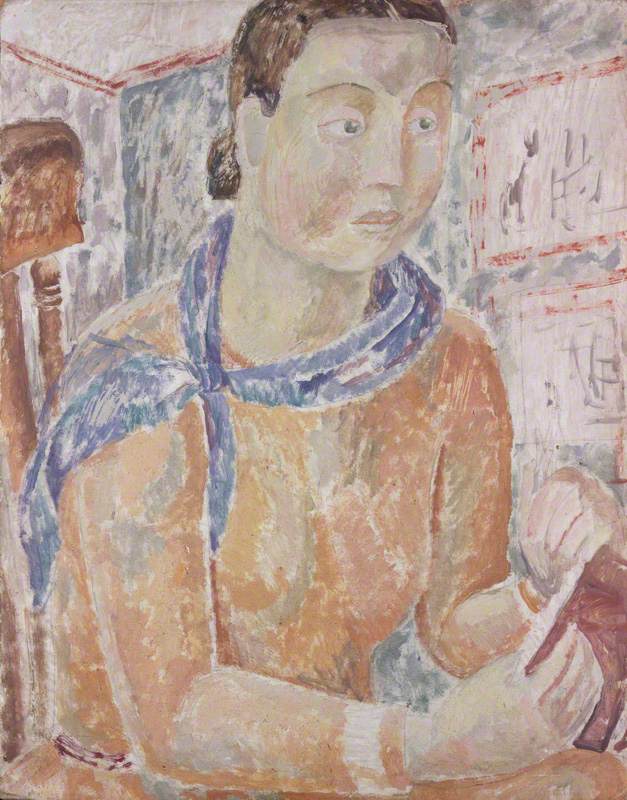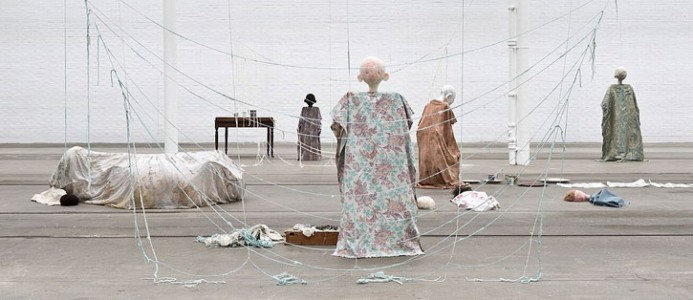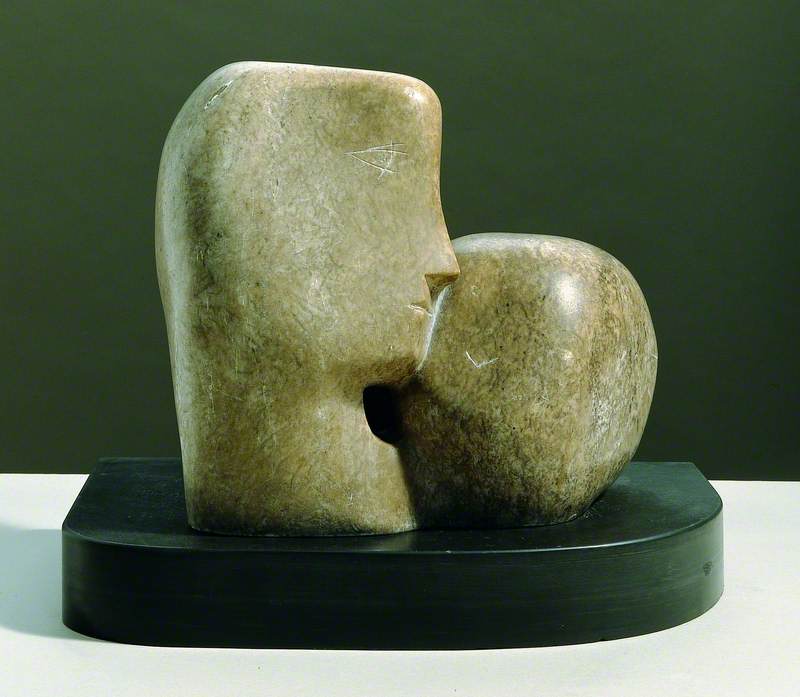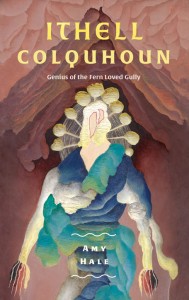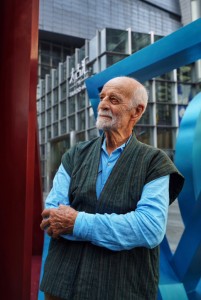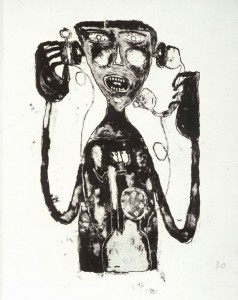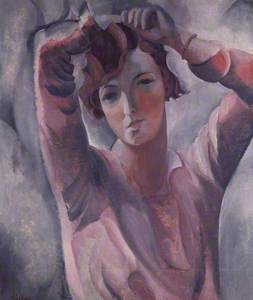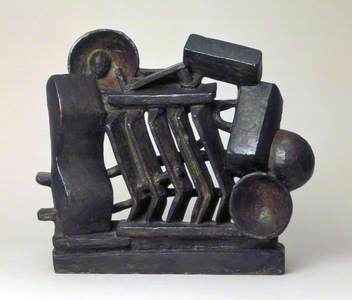Envision curving lines and little objects of plaster encountering on a flat ovoid base or emerging from white backgrounds. The image comes to mind looking at Paule Vézelay's creations.
In this unique approach to surrealist abstraction, there is an immediate resonance with Alberto Giacometti's objects whose heightened awareness she reinterpreted into personal creative experiences. They both share an alternative artistic perception and played a decisive part in broadening the horizons of visual representation.
Paule Vézelay (née Marjorie Watson-Williams) was born on 14 May 1892 in Bristol to a distinguished medical family. On her mother's side, her great-uncle was the philosopher F. H. Bradley, whose most ambitious work, Appearance and Reality, was published a year after she was born.
In 1912, she entered the Slade School in London but soon left to enrol at the London School of Art on the Stratford Road, South Kensington, where she met her teacher George Belcher.
She first became known as a book illustrator and printmaker and only began to paint after her crucial visit to Paris in 1920. Six years later, she settled in Paris and adopted the name Paule Vézelay in admiration for the majestic Romanesque church of Vézelay. Her choice of first name was probably not just to address sexism, but about a desire for anonymity and the crafting of a new identity.
From 1929 to 1932 she lived with Surrealist painter André Masson and in 1934 she joined the group Abstraction-Création, forming lifelong friendships with Sophie Tauber-Arp and Jean Arp. She strongly pursued via Arp to show her work at the 'International Surrealist Exhibition' in London in 1936. From this time onward she became involved in the School of Paris, meeting many of the leading artists, including Braque, Giacometti, Gris, Kandinsky, Matisse, his daughter Marguerite Duthuit and Picasso.
Breaking with the scholarship that regards Vézelay's surrealism any deeper than a gentle fantasy, it urges one to reconsider her surrealist interlude through her encounter with Alberto Giacometti. He had already established himself as the only sculptor of André Breton's Group. In 1935 he abandoned the Surrealist movement and became interested in how to sculpt human beings as one would see them from a distance.
Vézelay shared with Giacometti the same feeling of precariousness towards existence. Her living forms, lines, and geometrical objects resonate with Giacometti's existential space.
The new spatial dynamic explored by both artists continues to inform sculptural practice today. Their objects, as bearers of energy, contexts of fragility, inspire an oneiric vision and evoke a theatrical aspect of the world.
Let us emphasise that Vézelay's sculptural geometries, such as Curves and Circles (1930), present intriguing parallels with the ambiguous objects of Giacometti.
For each there is a tactile bodiliness invoked at the same time that the forms they prefer are pared down. They deny the viewer a conventional volumetric sense of bodily shape. A contemplative mode of viewing, such as this, might threaten to return the viewer's gaze. This new typology of sculptures establishes a revolutionary interaction between the object and the viewer, the bodily form and the ideal.
Traces of Giacometti and Vézelay's connection can be found among the Tate Archives. They include a record entitled 'Photocopied notes from Alberto Giacometti about appointments to meet,' that proves their mutual knowledge of each other. As Sarah Wilson argues in her catalogue for the 1995 exhibition 'Paule Vézelay/Hans Arp: The Enchantment of Purity', 'transitional works such as the drawing Balance, 1937, reveal the influence of Giacometti's drawings of sculptures, some imaginary, some realised, the famous 'Objects Mobiles et Muets' published in Le Surréalisme au Service de la Révolution in 1931.' (i)
Through this context, it might be better to read Vézelay's emphasis of Giacometti's tactility as a new awareness in seeing her reality. The work entitled Five Forms (1935) by Vézelay was exhibited in 1938 as Quatre objets sur une forme ovale (Four Objects on an Oval Form).
The living Five Forms seems to recall Giacometti's 'disagreeable objects' concept, defined by him as objects without pedestal and without value. Vézelay's sculpture is made of solid white plaster and consists of two cones of different sizes, a tusk-like curved cone, and a similar form cut in half lengthways, curving upwards from a flat ovoid base. She created an illusion of space and time through the association of different geometrical objects that explore ideas of vulnerability and resistance. In their ambiguous relationship with reality, these curved objects encompass several meanings and try to push a notion of awareness, perception, and representation.
Vézelay's structures developed into collections of surrealist cones and geometrical forms, which echoed the biomorphic structures of her friend Jean Arp, who certainly knew Giacometti's Suspended Ball of 1931. This sculpture may have inspired both Five Forms and Arp's Sculpture to be Lost in the Forest of 1932. (ii)
In Suspended Ball, the two bodies overlap but never touch. Their movement relates to the real-time of the viewer's experience and becomes visible. It invites them to wander through the bodies, offering multiple viewing angles, producing a dynamic vision through the optical and physical layering of objects.
View this post on Instagram
This discussion helps connect Vézelay's art with Giacometti's practice and reconfigure her surrealism as an essential moment for her artistic direction with her work occupying a transitional space. It takes inspiration from the Surrealists and anticipates the beauty of her more classical compositions conceived and created within the Abstraction-Création group that she joined in 1934. Since then, as we can see through Abstract Composition (1935) she committed herself totally to the abstract movement always making new discoveries and celebrating the encounter between abstract and classicist principles.
Paule Vézelay died in March 1984, about ten months after an exhibition at the Tate Gallery which paid tribute to her after many years of neglect. Today, she deserves to be more widely recognised – a woman whose life and art have never been separable.
Virginia Marano, doctoral student at the University of Zurich
(i) Sarah Wilson, Paule Vézelay/Hans Arp: The Enchantment of Purity, exhibition catalogue, Henry Moore Institute, 1995, pp. 4–5
(ii) Elisa Tamaschke, Jana Teuscher, and Loretta Würtenberger (eds.), Hans Arp & Other Masters of 20th Century Sculpture, H. Heenemann GmbH & Co. KG, 2020










